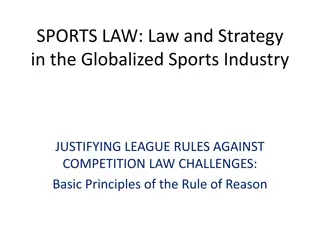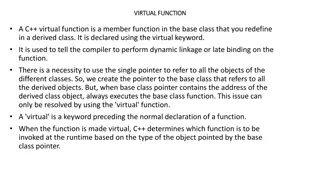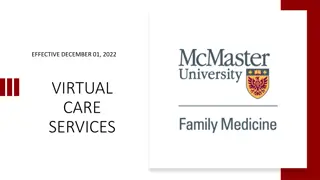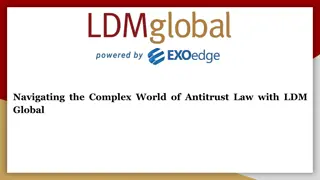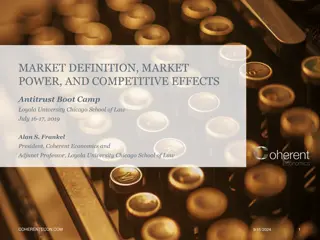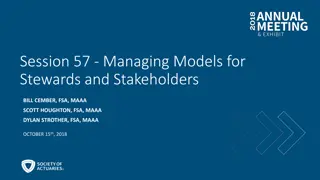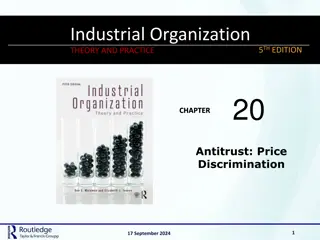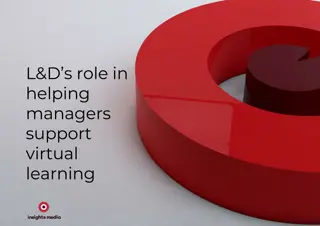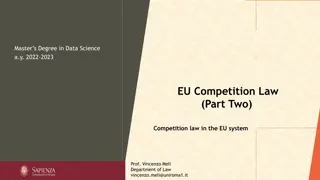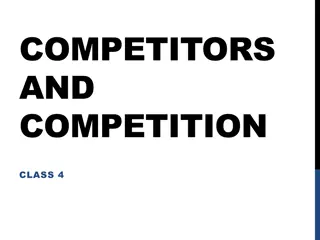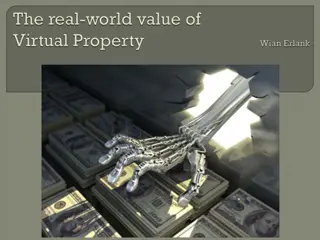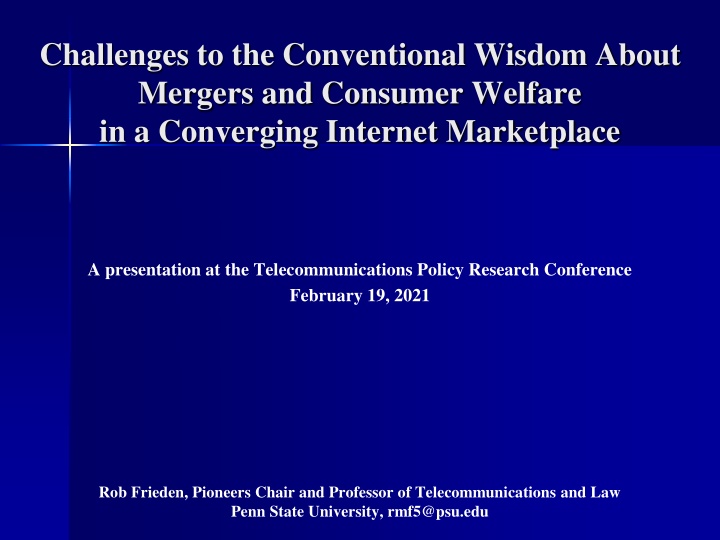
Challenging Conventional Views on Mergers and Consumer Welfare in Internet Marketplaces
This presentation challenges assumptions on the impact of mergers in broadband ventures, highlighting potential harm to competition and consumers. It discusses the dynamics of winner-take-all markets, risks of market concentration, and the dominance of platform operators in the evolving internet ecosystem.
Download Presentation

Please find below an Image/Link to download the presentation.
The content on the website is provided AS IS for your information and personal use only. It may not be sold, licensed, or shared on other websites without obtaining consent from the author. If you encounter any issues during the download, it is possible that the publisher has removed the file from their server.
You are allowed to download the files provided on this website for personal or commercial use, subject to the condition that they are used lawfully. All files are the property of their respective owners.
The content on the website is provided AS IS for your information and personal use only. It may not be sold, licensed, or shared on other websites without obtaining consent from the author.
E N D
Presentation Transcript
Challenges to the Conventional Wisdom About Mergers and Consumer Welfare in a Converging Internet Marketplace A presentation at the Telecommunications Policy Research Conference February 19, 2021 Rob Frieden, Pioneers Chair and Professor of Telecommunications and Law Penn State University, rmf5@psu.edu
The Main Points This paper identifies flawed assumptions about the potential for anticompetitive and consumer harm from mergers and acquisitions of broadband ventures. Vertical mergers are not always benign as they harm competition and consumers, despite the conventional wisdom that the combining parties were never competitors. The Internet ecosystem favors winner take all sweepstakes enhanced by limited government oversight, based on the assumption that consumers benefit when they can access attractive services without having to make direct cash payments. Free does not mean without significant consumer cost and potentially grave societal harm. U.S. federal agencies with antitrust enforcement responsibilities and reviewing courts typically accept the Chicago School prescription: approve any transaction that generates short term consumer benefits. While properly emphasizing consumer welfare, this model may fail to identify all impacts (positive and negative) occurring when ventures, such as AT&T and Comcast, operate throughout a market ecosystem. Emphasis on price paid by downstream consumers may ignore the value extracted from data mining and the harms generated when a vertical acquisition creates new incentives in horizontal markets. e.g., AT&T s greater willingness to trigger broadcast television blackouts when it can offset financial losses with increased broadband access revenues. 2
First Amendment Stakes Marketplace and technological convergence, coupled with relaxed and generous antitrust enforcement policy promote concentration of market segments. Might speech get suppressed? Many Internet markets favor winner take all sweepstakes in light of high, positive network externalities, i.e., more and more subscribers join the bandwagon of the market leader which in turn bolsters market dominance by a few players. These are the best and worst of times: a wealth of content options and new, compelling non-linear video content access, but also, ever increasing market concentration and domination by a few ventures who are not neutral, technology companies offering free software and apps. Two-sided market domination by platform operators present a compelling value proposition, as evidenced by massive subscriptions and unicorn valuations. However, offsetting costs include harm to the marketplace of ideas. Intentionally, or not, social networks have become agenda setters, censors, data miners, privacy invaders, mood manipulators, trust disruptors and profiteers from surveillance capitalism. 3
Platform Intermediaries with Dominant Market Shares Current antitrust market assessment makes no distinction between conventional transactions involving bricks and mortar ventures and Internet firms whose value accrues mostly from intangible assets such as the ability to generate revenues from data mining, analytics and targeted advertising. Many of the most successful firms have erected a platform and operate as an essential intermediary linking content providers and advertisers upstream with downstream consumers. Government agencies with antitrust enforcement responsibilities (DoJ, FCC, FTC), emphasize short term consumer welfare enhancement, e.g., free access to valuable content and largely ignore the surveillance costs incurred by consumers, directly, e.g., loss of consumer surplus, surge pricing and privacy intrusion, and indirectly, e.g., loss of trust in government, media, civil society, election meddling. The agencies appear unable or unwilling to consider instances where a merger or acquisition has multi-dimensional impacts with simultaneous effects on vertical, horizontal, core and adjacent markets. False negative assessments support mergers that harm consumers and ignore a longstanding rule that there is no such thing as a free lunch. By fighting the last war, these agencies fail to identify new risks to consumer welfare, particularly by ventures operating in multiple markets that do not readily fit into the conventional assessment of mutually exclusive vertical and horizontal planes. 4
Internet Markets Do Not Always Fit Within Conventional Antitrust Assessment Models Companies like AT&T and Comcast operate in a multidimensional, 360 degree marketplace. They create and distribute content, also offering service bundles combining video, broadband access, wired and wireless telephone service and security services. When ventures integrate multidimensionally, a proposed merger or acquisition may not fit solely within a single market direction even though antitrust law and doctrine shoehorns all transactions into mutually exclusive vertical or horizontal planes. For example, government agencies and reviewing courts considered Comcast s acquisition of NBC-Universal and AT&T s acquisition of Time Warner as vertical integration. In both cases, the acquiring firm also exploited comparative advantages in horizontal markets, including reduced content costs, bundling content with other services and zero rating of affiliated content delivery. As creators and distributors of content, these firms can harm competition and consumers by raising the cost of content to competitors, withholding content, triggering blackouts and profiting from consumers growing dissatisfaction with high monthly subscription access to a large bundle of video channels. 5
Misperception of Market Impacts by Reviewing Courts The district court judge presiding over the Justice Department s 2018 antitrust suit against AT&T s $85 billion acquisition of Time Warner (United States v. AT&T, 310 F.Supp.3d 161 (D.D.C. 2018) stated unequivocally that AT&T s vertical integration into content ownership would not raise the cost of access to Time Warner content, nor trigger more blackouts when video content creators and distributors fail to reach closure on new commercial terms before a contractual deadline. The judge also wrongly concluded that all vertical integration efficiency gains (estimated at $352 million) would flow to consumers through rate reductions. The case focused almost entirely on AT&T s incentive and ability to harm competition and consumers in its capacity as the new owner of Time Warner s existing and future content. A 7 year commitment to baseball arbitration, which maintains the status quo without a blackout, and existing multi-year retransmission contracts, limit AT&T s ability to trigger blackouts in its capacity as a content creator, but has no effect on its strategy as a Multichannel Video Programming Distributor ( MVPD ). 6
Misperception of Antitrust Impacts by Reviewing Courts (cont.) Both the lower and appellate courts, 916 F.3d 1029 (D.C. Cir. 2019) ignored AT&T s ability and incentive to trigger blackouts as a MVPD and its ability to offset revenue losses, from blackouts and subscriber churn, with revenue increases from broadband and bundled services. AT&T appears to have devised and executed a sophisticated, multi-faceted strategy to offset the financial harm and customer anger from blackouts. The company now aggressively seeks to reduce increases in programming costs, in its capacity as an MVPD, apparently confident that it can offset its customer churn rate during a blackout with consumer migration to one or more of its MVPD and broadband access services. Ironically, firms like AT&T can benefit from new over the top video program options, cord shaving and cord cutting by offering cheaper skinny bundles of content, zero rating of affiliated content delivery and wired/wireless access to new mostly non-linear video content, e.g., Netflix. 7
Conclusions and Recommendations The Internet ecosystem does not conveniently segment into mutually exclusive, vertical and horizontal planes, but current antitrust doctrine takes this as a given, e.g., liberal Department of Justice guidance on vertical ( non-horizontal ) mergers and acquisitions and closer scrutiny of horizontal integration. DoJ has created and relaxed its quantitative measure of market concentration (the Herfindahl-Hirschman Index) and creates rationales for accepting mergers that otherwise would trigger alarm. Chicago School doctrinal purity ignores ample empirical evidence that dominant firms operating in both vertical and horizontal market segments can generate immediate and longer-term harm to competition and consumers. Reviewing courts have shown extreme reluctance to consider the full range of potential harm, particularly when nondisclosure agreements and behind the scenes data mining and analytics extract value from services considered free and welfare enhancing. The FCC and reviewing courts have embrace economic doctrine favoring scale and deregulation at the expense of competition and consumers. 8





